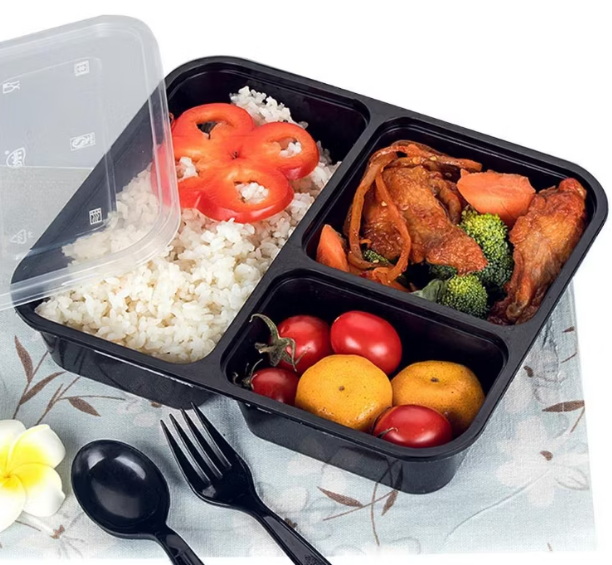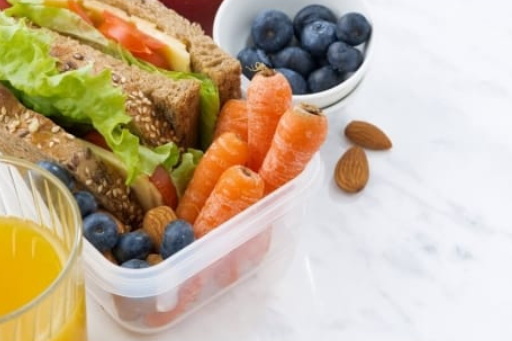
Content Menu
● Introduction to Lunch Box Disposable Food Containers
>> Types of Lunch Box Disposable Food Containers
● Tips for Keeping Food Fresh in Lunch Box Disposable Food Containers
>> 1. Choose the Right Container
>> 2. Use Insulation and Cooling
>> 3. Maintain Cleanliness
>> 4. Pack Food Wisely
>> 5. Reheat Safely
● Benefits of Using Lunch Box Disposable Food Containers
>> Convenience
>> Environmental Impact
● Food Safety in Disposable Packaging
● Additional Tips for Lunch Box Safety
● Conclusion
● Frequently Asked Questions
>> 1. What are the best materials for lunch box disposable food containers?
>> 2. How can I keep hot foods warm in a lunch box?
>> 3. What are the benefits of using compartmentalized lunch boxes?
>> 4. Can I reuse disposable food containers?
>> 5. How can I ensure food safety when using disposable containers?
● Citations:
Maintaining the freshness of food in lunch boxes, especially when using disposable food containers, is crucial for both health and convenience. This article will explore various methods and tips to keep your meals fresh and safe to eat, focusing on the use of lunch box disposable food containers.

Introduction to Lunch Box Disposable Food Containers
Disposable food containers have become increasingly popular due to their convenience and affordability. However, ensuring that the food remains fresh and safe is a challenge. Lunch box disposable food containers can be made from various materials, including plastic, biodegradable materials, and paper-based products. Each type has its advantages and disadvantages, which will be discussed in detail.
Types of Lunch Box Disposable Food Containers
1. Plastic Containers: These are the most common type and are favored for their durability and cost-effectiveness. However, they may not be the most environmentally friendly option unless they are biodegradable.
2. Biodegradable Containers: Made from materials like bagasse or cornstarch, these containers are eco-friendly and can be composted. They are ideal for reducing environmental impact.
3. Paper-Based Containers: These are another eco-friendly option, often used for lighter foods like sandwiches or salads.
Tips for Keeping Food Fresh in Lunch Box Disposable Food Containers
1. Choose the Right Container
- Material: Ensure the container is made from food-grade materials and is suitable for the type of food you are storing. For example, use microwave-safe containers for reheating.
- Size: Select a container that is just the right size for your meal to minimize air space, which can lead to faster spoilage.
2. Use Insulation and Cooling
- Insulated Lunch Boxes: These can keep food hot or cold for several hours. Use them with ice packs for perishable items.
- Ice Packs: Place ice packs in your lunch box to keep food below 40°F (4°C), which is crucial for preventing bacterial growth.
3. Maintain Cleanliness
- Wash Hands: Always wash your hands before preparing food to prevent cross-contamination.
- Clean Containers: Ensure that any reusable parts of your lunch box are cleaned regularly. For plastic containers, wash them by hand if they are not dishwasher-safe, and discard them if they absorb odors or show signs of wear[1].
4. Pack Food Wisely
- Separate Foods: Use compartmentalized containers to keep different foods separate, preventing flavors and textures from mixing.
- Avoid Overpacking: Only pack what you can consume to avoid leftovers that may go bad.
5. Reheat Safely
- Microwave Safety: Only use microwave-safe containers for reheating. Avoid using aluminum foil or single-use plastic containers in the microwave[1].
- Thermos for Hot Foods: Use insulated containers like thermoses to keep hot foods at a safe temperature.
Benefits of Using Lunch Box Disposable Food Containers
Convenience
- Easy to Use: Disposable containers are convenient and require no cleaning or maintenance.
- Portability: They are lightweight and easy to carry, making them ideal for on-the-go meals.
Environmental Impact
- Biodegradable Options: Choosing biodegradable containers can significantly reduce environmental waste.
- Recyclable Materials: Some disposable containers are made from recyclable materials, which can be reused.

Food Safety in Disposable Packaging
Ensuring food safety when using disposable packaging is crucial. Here are some best practices:
1. Choose Food-Grade Materials: Always use packaging that complies with food-grade standards, free from toxins and BPA[2].
2. Ensure Proper Sealing: Use leakproof and airtight containers to prevent spills and protect food from external contaminants[2].
3. Temperature-Appropriate Packaging: Select packaging suitable for the food's temperature, such as microwave-safe containers for hot meals or insulated boxes for cold items[2].
4. Hygienic Storage: Store disposable packaging in clean, dry areas away from potential contaminants like dust or pests[2].
5. Educate Staff: Train staff on proper handling of disposable packaging to minimize the risk of cross-contamination[2].
Additional Tips for Lunch Box Safety
- Temperature Control: Keep perishable foods cold with ice packs or insulated containers. Hot foods should be kept above 60°C (140°F) to prevent bacterial growth[3][4].
- Non-Perishable Foods: Choose non-perishable items like fruits, nuts, or dried meats if you cannot maintain temperature control[6].
- Cleaning and Sanitizing: Regularly clean and sanitize your lunch box and containers to prevent contamination[6].
Conclusion
Maintaining the freshness of food in lunch box disposable food containers requires careful selection of containers, proper insulation, cleanliness, and safe reheating practices. By following these tips, you can enjoy safe and healthy meals while minimizing environmental impact.

Frequently Asked Questions
1. What are the best materials for lunch box disposable food containers?
The best materials for lunch box disposable food containers include biodegradable materials like bagasse or cornstarch, which are eco-friendly and compostable. Plastic containers are also common but should be BPA-free and microwave-safe if intended for reheating.
2. How can I keep hot foods warm in a lunch box?
To keep hot foods warm, use an insulated container or thermos. Fill the container with boiling water, let it sit for a few minutes, then pour out the water and add your hot food. This method can keep food warm for several hours.
3. What are the benefits of using compartmentalized lunch boxes?
Compartmentalized lunch boxes help keep different foods separate, preventing flavors and textures from mixing. They also aid in portion control and can help maintain dietary restrictions by preventing cross-contamination.
4. Can I reuse disposable food containers?
It is generally not recommended to reuse disposable food containers, especially if they are made from materials not designed for multiple uses. Reusing them can lead to contamination and the breakdown of the plastic, potentially releasing harmful chemicals.
5. How can I ensure food safety when using disposable containers?
Ensure food safety by using food-grade materials, keeping perishable foods cold with ice packs, reheating safely in microwave-safe containers, and avoiding cross-contamination by washing hands and surfaces regularly.
Citations:
[1] https://www.canr.msu.edu/news/keeping_food_safe_choosing_food_storage_containers
[2] https://supplyexpress.co.uk/blog/food-safety-in-disposable-packaging-best-practices-tips/
[3] https://healthymadetasty.com.au/blog/make-your-lunch-box-safe/
[4] https://www.quebec.ca/en/health/nutrition/food-safety-risk-prevention/food-safety/food-storage/precautions-lunch-boxes
[5] https://www.lpack.co.uk/blogs/news/the-importance-of-food-safety-in-disposable-packaging-tips-best-practices
[6] https://extension.umaine.edu/food-health/2024/08/15/lunch-box/
[7] https://lifehacker.com/the-best-ways-to-pack-a-school-lunch-so-it-actually-sta-1850744058
[8] https://smashproducts.com/blog/how-to-keep-your-lunch-box-cool--fresh--smash
[9] https://foodhandler.com/best-practices-for-food-storage/
[10] https://www.cfs.gov.hk/english/programme/programme_haccp/programme_haccp_lunchbox_trade.html
[11] https://nestasia.in/blogs/news/tips-to-keep-your-packed-meals-neat-tidy
[12] https://www.culinarydepotinc.com/blog/navigating-food-safety-best-practices-for-using-restaurant-disposables/
[13] https://www.adventuresnacks.com.au/blogs/news/how-to-pack-school-lunches-ahead-of-time
[14] https://lunchinabox.net/2007/05/food-safety-for-packed-lunches-updated/
[15] https://www.restaurantware.com/blogs/safety-and-sanitation/10-best-practices-for-food-storage-and-safety
[16] https://homepuff.com/blogs/blog/how-to-keep-meals-safe-with-an-insulated-lunchbox
[17] https://wandp.com/blogs/fresh-squeeze/5-packed-lunch-ideas-storage-tips-recipes-more
[18] https://supplyexpress.co.uk/blog/food-safety-in-disposable-packaging-tips/
[19] https://www.reddit.com/r/homemaking/comments/17cl1l7/how_do_you_keep_a_packed_lunch_edible_no_fridge/
[20] https://www.industrykitchens.com.au/Blog/disposable-food-containers/

















